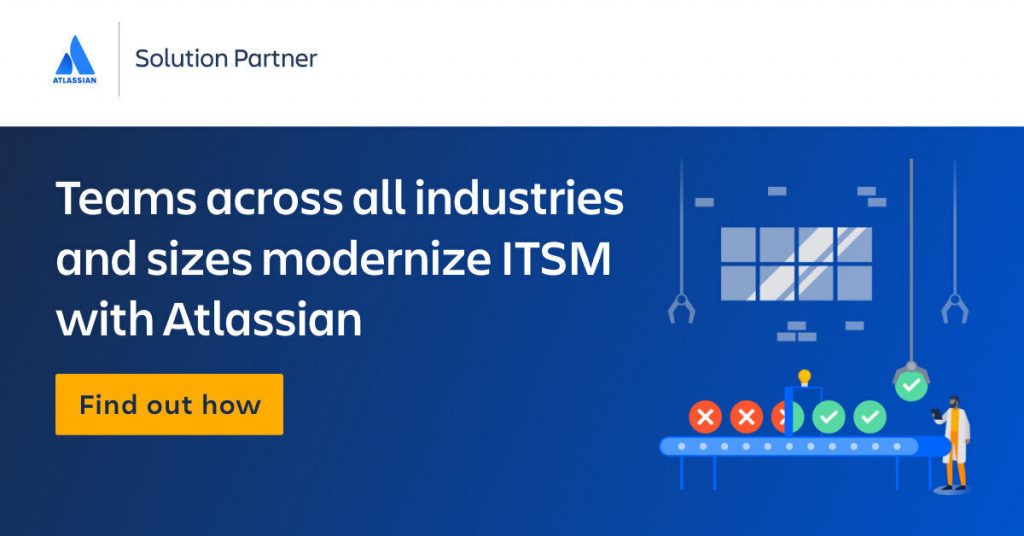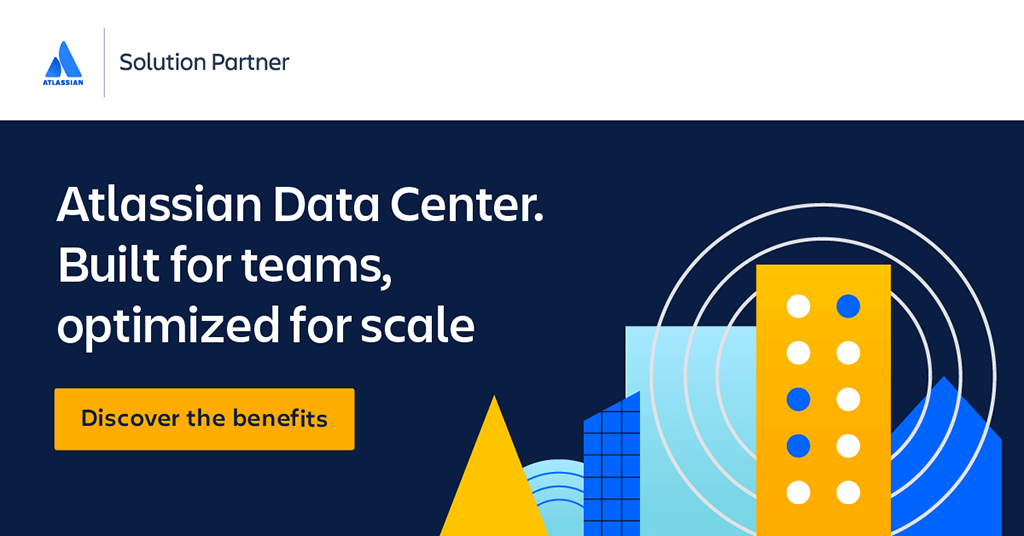
Jira is a project management software application. Its main uses are for tracking issues, bugs and helping teams work in a more orderly fashion. Even though it’s most popular among developers, Jira can be used just as easily by sales, marketing, HR or other departments.
One thing to remember is that the above applies to Jira Software. When speaking of Jira, it’s most likely that Jira Software is the one being referred to.
However, keep in mind that there’s more to Jira than just its issues tracking component.
Depending on what you want to use it for, the Software version might actually be inappropriate.
That’s why there’s also Jira Work Management (former Jira Core) and Jira Service Management (former Jira Service Desk).
But, let’s not get ahead of ourselves. In essence, remember that Jira is intended for Agile teams. The concept first appeared in software development, but it has since been widely adopted.
Whenever you’re looking for flexibility, cross-team collaboration and a quick reaction to change from your team, you’re looking at the Agile methodology.
Jira empowers your management and employees to make better use of workflows based on adaptability.
Table of Contents
- What is Jira? An Overview
- Jira’s Scrum Benefits
- Jira’s Kanban Benefits
- Connecting Kanban and Scrum
- What is Jira Used For Most Often?
- Ready to Move to Jira?
What is Jira? An Overview
Dating back to 2002, Jira was developed as a tool for issue-tracking. Its parent company, Atlassian, was looking to create a solution that allowed teams to collaborate better and faster with each other.
Jira fulfilled this goal from the get-go. Over the years, it has received a number of iterations and innovations that furthered its novel utility.
Remember though, Jira is not a single thing. There are actually 3 distinct packages through which you can benefit from its many features.
Pro tip: If you’re looking to grow your business with any of the solutions below (or other Atlassian products), just get in touch with us. There’s a contact form right at the end of this guide.
At Wesrom, we’re a certified Atlassian partner and ready to implement any of their software solutions at a discount (and train you on how to use them too).
We also do custom development, marketing, and coaching.
Now, let’s go back to Jira. The 3 product versions are:
- Jira Core/Work Management: the version of Jira for business teams.
- Jira Software: everything offered in Core, but with added functionalities intended for Agile software development teams.
- Jira Service Desk/Management: built for professional teams (IT, HR, accounting, etc) specializing in support.
With the way Atlassian expanded Jira, it’s safe to say that any software development company should be using it. Or, as we’ve mentioned above, you can get it for other departments too.
Overall, you’d use Jira, as a toolset, for:
- Project management: building a case, the project charter, requirements, task allocation & tracking, etc.
- Agile software development: creating software “bits” in sprints, QA-ing, presenting to stakeholders, continuing development.
- Product management: justifying new products, planning and forecasting new product development, establishing pricing, launching and marketing.
Jira Core/Work Management

Quick note: Jira Core is an older name. The full package intended for business teams is officially called Jira Work Management. You can consider the names to be interchangeable.
Think of Core as being the more “essentials” version of Jira. It exists for non-technical teams. So, those could be HR, marketing, sales, operations, finance, or whatever else your company is doing.
Jira Core would be used for improving workflows, raising the level of communication and cooperation and general task management.
No more lengthy and ineffective conversations. Say goodbye to email chains and fragmented information.
Requests, approvals and important knowledge all belong in Core, where they can get accessed easily.
Moreover, task management is very visual and intuitive, allowing team members to accurately determine the status of…anything, really.
When you cut down to the case, software teams aren’t very dissimilar to business teams. You still need operations management, collaboration and teamwork.
The prevalence of information silos
Both software teams and business teams can tend to live in their own bubble. Project-centric information might never reach other departments, even if it would’ve been important.
The data tends to be scattered, shared chaotically and just complicated to find when you need it. That leads to headaches, demotivation and a general sense of being lost.
To just solve the situation and assure transparency and clarity, use Jira Core.
The process works no differently for someone writing code than for someone planning and organizing a keyword research for SEO. Well, mostly. Granted, less peer review/QA and pull requests are involved.
However, that’s why Core is different from Software. Instead of cluttering up the experience with some features needed only for development, Jira Core is simplified. The fundamental features are still there, but streamlined.
There are many templates available, but Jira admins can freely customize their own too. Regardless, teams get to:
- Keep track of tasks.
- Organize projects into phases.
- Standardize routine processes and procedures.
- Stay in the loop with @mentions directly on precise tasks.
- Give feedback and assistance through comments.
- Know the general project status at all times with a simple summary view.
Jira Software

The most popular out of the 3, and what people usually think of when they’re asking themselves “what is Jira”. Out of the bat, it’s designed for software development.
It has all the great features and assets of Core, but adds an Agile layer on top of everything. This favors developers because it lets them work as modern times expect them to.
Most clients do not appreciate lengthy development times where they don’t receive any updates or demos of what’s already working. The concept of Agile development addresses this head-on.
Instead of going 0 to 100% and only showing the final product, developers are encouraged to work in “sprints”. This is when an IT product is developed gradually, in multiple stages of functionality.
After the work of a sprint is finished, it goes into Quality Assurance. Then, it’s presented to the client by the project manager.
Jira Software comes in to expedite and simplify this whole process:
- Plan fast & easy using “story” or “issues” cards on the kanban board. Allocate a team member to each card. You can also take full advantage of scrum boards, which are a visual and intuitive manner of planning and allocating tasks.
- Track issues in real-time, using the “priority” function to specify the importance of each task. Guarantee visibility for all employees by keeping task-specific information and discussions on that card.
- Release without worry thanks to having an up-to-date database of the software’s builds and statuses right in Jira.
- Report with only a few clicks by using visual and clear data that the team has added to each task in particular. Yes, you can auto-generate reports.
Great development teams ships early and often. Jira is there to support them and your other software departments.
Tracking and fixing bugs, providing information and reports, unrestricted (unless you choose otherwise) & easy access to collaboration.
Jira Service Desk/Management

Quick note: Jira Service Desk was created in 2013, but has since been incorporated into the larger and more in-depth Jira Service Management (JSM), a better ITSM solution launched in 2020. The names are interchangeable.
A service desk (or help desk) is the entry point of both employees and customers when they require something.
Requests could vary from a computer not booting up in the office, to a client not receiving deliverables in the agreed timeline.
In other words, a service desk is both customer support and employee support. Thing is, that means that service desk personnel can end up dealing with a variety of issues and requirements.
They need a way to centralize and make sense of all that influx of information.
It’s important that support agents act fast, answering and providing information to all those who seek it. But, to do that, support agents must first organize the way in which they work.
So, what is Jira in this context? Well, think of the way we described Jira Core, but add another layer of ops, facilities and infrastructure (like a cloud service) support tools.
Additionally, you don’t need any time to set up Jira Service Management. Simply select a pre-built template and make use of its time-saving features, many of which revolve around automation.
Some great examples:
- No more emails, Slack or Microsoft Teams. Move all requests and discussions to queues in JSM.
- Ready-to-go ITIL processes.
- Automation for repetitive tasks.
- Simple integration with Confluence for an almost built-in knowledge base.
- Quick & easy escalation of tasks and issues.
- Fast adaptability to changes; easy incident solving and optimal delivery of quality service.
- Intuitive mix of development and IT into the newer concept of DevOps, for increased productivity and collaboration.
- Access to the “portal” view. Basically, this means setting up an online portal for all of your JSM projects. Clients and customers can interact with your service team there.
- Designed for high-velocity teams.
Jira’s Scrum Benefits

A lot of projects can feel massive when you take that first look at them. So many requirements and dependencies that are needed to make everything run smoothly.
Even if it’s not a software or web development project, there could still be many facets to the project.
A multi-channel marketing campaign; a modernization of an office’s infrastructure; completely revamping the onboarding process at an organizational level.
Those are all projects, and can benefit from a scrum approach. All right, but what’s scrum? Great question!
It’s a project management framework through which complex projects get torn down into “bite sized” pieces.
Scrum focuses on powerful and laser-focused collaboration; solving parts of a project in sprints.
Everything can be monitored with ease using scrum boards, so that task prioritization and allocation is visually available to all team members.
Help your teams push towards the same goal and break information silos:
- Form cohesion and easily showcase progress during the project’s lifecycle.
- Stimulate communication and implement transparency.
- Maintain standards of quality and reduce the pressure of workloads by working in sprints (a sprint’s duration depends on your project and teams). Allow for an iterative process that doesn’t drain your team of motivation and inspiration.
- Re-focus your employees on the project’s value and quality, not just getting it done fast.
- Keep resources in mind and don’t go over budget, deadlines or miss key milestones.
Scrum is handled by a scrum master. They can take advantage of Jira’s benefits and create a simple to follow process for sprints.
Scrum masters emphasize focus, commitment and respect among all members of a team, so that the objective is reached successfully.
Here’s an example for development:
Backlog → To do → In progress → On staging → QA → Ready for production → Live
Jira’s Kanban Benefits
If you’re familiar with the kanban workflow, look no further than Jira. In fact, it’s actually been improved quite recently from a UX standpoint, after Atlassian acquired Trello (another kanban tool).
You can create your own kanban board without any sort of trouble. There’s an option to do it during the initial setup, or later down the line for a specific project.
It’s pretty straightforward, as you get walked through a series of questions about your familiarity with Jira, what you want to use it for, and your management style.
If you want to add a board for an existing project, just click it on the left side of the menu and select “create board”. You’re pretty much done.
Now you can understand at a glance who’s working on what.
The kanban system also helps you see if things are running smoothly, or if there are potential roadblocks and delays (such as tasks being stuck in QA because of bugs or taking way longer than estimated).
At the same time, tasks can be moved between columns by just dragging-and-dropping, allowing for fast and easy updates. Whenever you want more details, just access a specific card.
There are fields for a description, images, priority, comments, assignee and reporter, if it’s an issue/task linked with something else, etc. Any detail you might need, it’s there.
Connecting Kanban and Scrum

Jira allows you to harness the power of both scrum and kanban. In fact, you can have both scrum and kanban boards for the same project.
Or, you can even follow the hybrid concept of Scrumban and mix them into one thing!
That’s because Jira’s kanban and scrum functionalities work hand-in-hand by default. Sure, at their core, kanban and scrum are different. They have their own boards, which can be searched with appropriate filter queries.
However, it makes sense to use them together. What’s more, both of these aspects of Agile teams are covered without difficulty by just making use of Jira.
Additionally, any Jira issue can also be an “Epic”. An Epic is a large body of work, composed of many “task” and “story” cards which must be completed to advance the Epic. It all ties together.
Tasks and stories can actually have sub-tasks themselves. No matter how you’d like to plan out your workflows and project roadmap, Jira’s a tool you should be looking into.
What is Jira Used For Most Often?
As you’ve seen so far, Jira is a very versatile tool. Overall, you could call it a project management tool. However, it’s usually used for some features more than others. Here are the main things you should know out of the bat.
1. Better Collaboration
Thanks to its comprehensive support of the Agile methodology (including both scrum and kanban), Jira gives teams the means of working better with each other.
What’s more, the increased efficiency and transparency is going to create a sense of satisfaction too.
When employees are happy with their workplace and with how projects are being managed, they’re more open to getting involved and taking responsibilities.
Jira helps project managers, team leaders and scrum masters alike to visualize the most important aspects of a project.
Then, they can strategize an appropriate action-plan and break it down into sprints.
2. Time Tracking
There’s no point in planning your sprints and estimating results if you don’t confirm the theory. Time tracking is an essential practice for many departments.
Maybe an issue which you thought could be solved in 3 hours actually takes 6. Or, the other way around.
Moreover, time tracking also helps your sales team a lot. By providing them actual, real information, they can handle their leads better in the future.
We’re pretty positive that you’ve had miscommunications in this regard; with promises being made when they shouldn’t have been.
The feature itself is pretty much as you’d expect it: working hours, working weeks, formatting dates as you prefer them, etc.
What’s also great is that you don’t have to stick to the base Jira time tracking method if you don’t like it.
There are other, more advanced options, in the Atlassian Marketplace. Each one integrates with Jira seamlessly.
It’s only a question of business preferences.
3. Visual and Straightforward Reporting

Thanks to its implementation of scrum and kanban boards, Jira is also perfect for project managers looking to compile updates.
The boards are simple to understand and make sense of, while each card in particular has the capability to allow team members to go in-depth with details.
The general system has all the features that you’d expect from a tool like Jira:
- Separation of backlog – in progress – completed tasks.
- Information about task allocation.
- Immediately visible workloads.
- Time tracking.
- Time since a card was stuck in a column (such as “In progress”).
- Simple tracking of scrum boards.
- Reports of sprints.
- Adherence to the roadmap.
- Flow charts.
- And more!
As with all things Atlassian, you can integrate further tools within Jira to aid you with reporting.
You can also opt for generating automated reports, where you get a .sheet generated depending on the parameters and filters that you set on the kanban/scrum boards.
4. Simple Project Roadmaps
It’s easy to get lost in the details. At the same time, project charters are usually too short to be of operational help for actual tasks and planning weekly activities.
Jira’s roadmaps though, that’s how you’ll help yourself get better. You can create clear and intuitive graphs.
With a mere glance, you immediately know at which stage you are in the project right now, and what tasks are going to follow.
Similarly, you have notions of the short and long term goals. Roadmaps are great for everyone, from executives to sales teams.
They work as a visual breakdown of a project’s overall structure; the proverbial backbone.
5. Enhanced Security

Keeping sensitive project information out of the reach of malicious parties is just as important as finishing it on time and up to quality standards.
Even if it’s not a top-secret project in nature, it can still be very detrimental to you for classified files to get out. They could give your competitors an edge, make internal issues known, or you might even get locked out of your system by hackers.
Jira goes beyond simple username and password logins. There are integrations for single sign-ins, a two-factor authentication feature, policies for account permissions, etc.
You can customize security and access as much as you like.
6. Complete Flexibility for PM
Sometimes, project managers have to be on the go. Depending on the industry, perhaps they’re always on the go. This severely limits the time they can spend in front of a desktop, or even a laptop.
Not to worry though, as Jira has a mobile application too (and it’s really good). It allows managing and creating tasks, it sends notifications about project updates, etc. In short, all the information you might need when you’re not at the (home) office.
7. Iterative Work
It’s very challenging to tackle a project head-on from all sides at once. The more complex the work gets, the higher the chances that there’s going to be mishaps and roadblocks around the way.
Jira allows your teams to segment their tasks into milestones. Rather than do a lot of work over months (which could have many errors in it), they can work in smaller batches for ~2 weeks.
Quality assurance is easier to be applied this way. Furthermore, the people who actually execute the work will be able to structure their thoughts and task-objectives better too.
Ready to Move to Jira?

Any business or development team, whether Agile or not, has something to gain from using Jira. Even if you take apart all of its layers of functionalities, the core reason still remains: better teamwork!
At the end of the day, that’s what’s going to make or break your company. That’s the answer to “what is Jira”.
You could have the best people in the industry working with/for you; it won’t amount to anything if they’re not collaborating.
With all the benefits it provides, Jira consolidates your workforce, streamlines their workflow, and improves your project management.
Let’s talk about how we can implement a complete suite of Atlassian solutions for your business and help you scale it to new heights.
